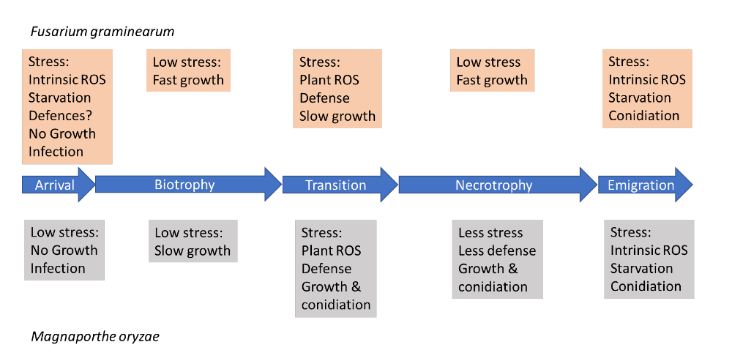We identified key genes needed for maintenance and growth and homed in on genes where there could be a competition between maintenance requirements (stress) and growth requirements. Such processes are synthesis of arginine, synthesis of DNA-bases, nitric oxide synthesis needing arginine, autophagy, DNA synthesis and DNA repair. Using procedures previously developed for the use of sets of downloaded transcriptomic data to test hypotheses concerning at what time under the course of infection of plants genes are expressed for the two pathogens Fusarium graminearum and Magnaporthe oryzae, we constructed a simplified regulatory network for these genes for both organisms. Our analysis shows that the transcription effort (cost) to maintain the fungal cells (maintenance) are high before infection and in early infection. During the following biotrophic phase maintenance cost drops for later in the transition to the necrotrophic phase increase dramatically. Finally, in the necrotrophic phase, maintenance is lower again despite the high growth rate that can also cause stress. The expressions of all identified genes behaved almost similar for both fungi except the DNA repair genes PARP/PARG that was not responding or absent in the mainly clonal M. oryzae which might indicate this species is more subject to evolution by point mutations than F. graminearum where sexual reproduction is frequent. The potential consequences of these different roles for PARP/PARG in the development and the accelerated breakage of host species resistance in a Red Queen dynamics scenario is discussed. Our analysis demonstrates the possibility to use large transcriptome datasets and co-regulations between key genes to test hypotheses and discusses the advantages with this technique as complement to molecular techniques employing knockouts and over-expression of target genes to suggest gene roles.

